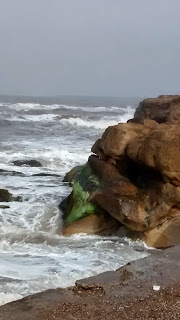It was a dark and stormy night...
So I began my blog two years ago in December 2013 telling my engineer's tales of how climate change is affecting UK infrastructure through storms, floods and landslides. This week, as the COP21 climate negotiations in Paris have worked through many stormy nights (literal and metaphorical) to try and hammer out a deal, the ICE hosted the Triennial Summit with the American and Canadian societies of civil engineers, a conference about resilience, climate and meeting the infrastructure needs of the future for cities around the world.A review of 2013/14
2013/14 was a bad winter for the railways, as I wrote about in more detail a few months later in March 2014, when it had been confirmed as the wettest three month period in UK history in some places. The railway at Dawlish was wrecked by ferocious waves caused by the St Jude storm's high winds, cutting off rail access to Cornwall and it was only reopened in time for Easter.
There were over 100 landslides on the rail network, including several places like the Hastings line where multiple incidents happened on the same line. A presentation by a rail engineer for Kent at the Yorkshire Geotechnical Group in May told a sorry tale of fighting the elements to get the lines reopened again, but in some cases it took many weeks because it was impossible to get materials in or out by rail where the line was blocked in both directions.

















